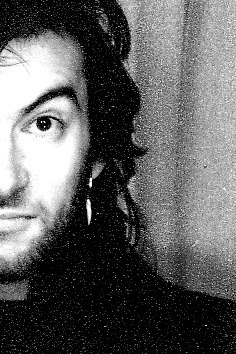
I was introduced to the art of David Seed through his sister Maggie Seed who has been a long time friend of mine as well as of Subversify. Knowing what I do about her wonderful (and hidden under a bushel) skills with clay, I was not in the least surprised to learn her kid brother David is also an accomplished artist.
However, browsing through some of his art which he has recently put up for viewing on his Facebook page (https://www.facebook.com/pages/David-Seed-fine-art/516448278377560) I found myself quite enamoured of his work. Some of it sucked me in immediately making me want to write a story just so I could have his pictures in it like this one:
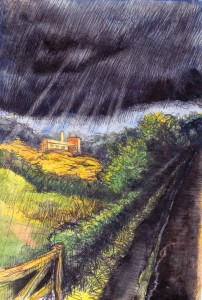
And others spoke to me in more fantastic ways. Although, I still wanted to make stories for them. Like this one:
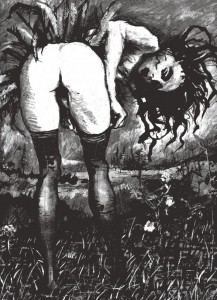
David lives in the West of England and is a self employed artist and carpenter. He’s into rock music, beer, curry and campervans.
He says he’s occasionally upset the neighbours by shouting “f**k the cat” when things go wrong. “God knows why,” he says, going on to state, “My partner thinks it’s a type of Tourettes.” As of today, he wants his epitaph to be “I told you I was ill….”
But I wanted to know more. So I asked. The following is our conversation.
G–When did you know you wanted to create things?
D- I wanted to make things from a really early age but didn’t really know how to go about it. I spent a long time making Saturn five rockets out of washing up liquid bottles and crocodiles with egg box scales. I also remember a phase of collecting small parts of broken machinery when I was six or seven with the intention of building “computers” although at that time I had no real idea of what a computer was. I wore through the pockets of my coat and completely mystified my parents when they discovered all this rubbish. My discovery that drawing things was a short cut to getting to the place I wanted to be was probably as much a relief to them as it was a revelation to me.
Lego and Meccano Junior were brilliant introductions to the way that things fit together and my dad was teaching me carpentry and metal work from about the age of seven. I loved science and could have followed that as a career path but in the English educational system in the early eighties there was a pressure to make early life choices. I don’t think things have got any easier for kids over the last thirty years.
G–As I know your sister and a tad about the family, I found it interesting when she told me you had been in Social Work. What made you leave?
D- The reason I started doing social work in the first place was because I found I really enjoyed working with adults with learning disabilities having taught art classes in a community arts cooperative. I left because of stress.
G– Your artwork is varied which I think is, if not exceptional then at least unusual. Am I just seeing things from years that you choose to post or do you actually jump about in your mind in terms of ideas, styles, what interests you, etc?
D- The posted drawings, sculptures and paintings were mainly produced over the twenty or so years I was working in social care and have been languishing in portfolios and sketch books for all that time. The last time I exhibited was 1992 and I thought it was time to get stuff seen again. This coincided with leaving the day job and going self-employed. I don’t think I’ve ever had a particular “style” but have always enjoyed experimenting with different techniques. At Art College I did a degree course based on a modern interpretation of the Arts & Crafts movement and the bit that “stuck” was the idea that historically there was no intrinsic difference between “art” and “craft”. I enjoy creating things, whether on paper, canvas or three-dimensionally, and this includes sculpture, pots, furniture, gardens or even cooking.
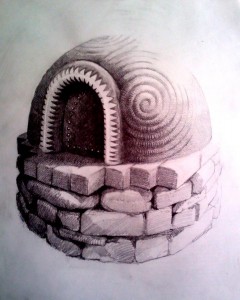
G– You also build things. Is this your full time “day job”? Did you always do this? Or is it something new.
D- I’ve always made things – building is just doing it on a larger scale. I was a carpenter and industrial model maker for a while before getting into social work and it has become again part of what I do for a living.
My old man taught me to mend things rather than throw things away and while this is getting fashionable again I’ve always done it – mainly because of often being skint (penniless), enjoying the process, and hating waste.
G– Building requires details, measurements, and exactness. How does this compare to your artwork. Most purveyors of art have an idea that artist have fluid left brain minds. Do you find it needs to be deliberate to switch from right to left brain activity? Or is this just not the case for you?
D- I don’t consciously switch but am functionally ambidextrous if that is any explanation. I’m told my granddad (a master pargeter) was also ambidextrous so I assume it’s genetic. I have a tendency to be a little “tight” if drawing right handed and have noticed that changing hands helps to loosen things up. I’ve noticed that some activities tend to be “handed” – I write with my right hand because that was the way I was taught to form letters and it sort of stuck (the shapes being designed to be formed left to right) but make pots left handed. I’m more accurate with a hammer in my right hand but am not “handed” when using any other tool. I’m a left handed gardener and cook.
Paint hits the canvas with the brush held in either hand, and when I’m in the “zone”, I often use both hands at the same time.
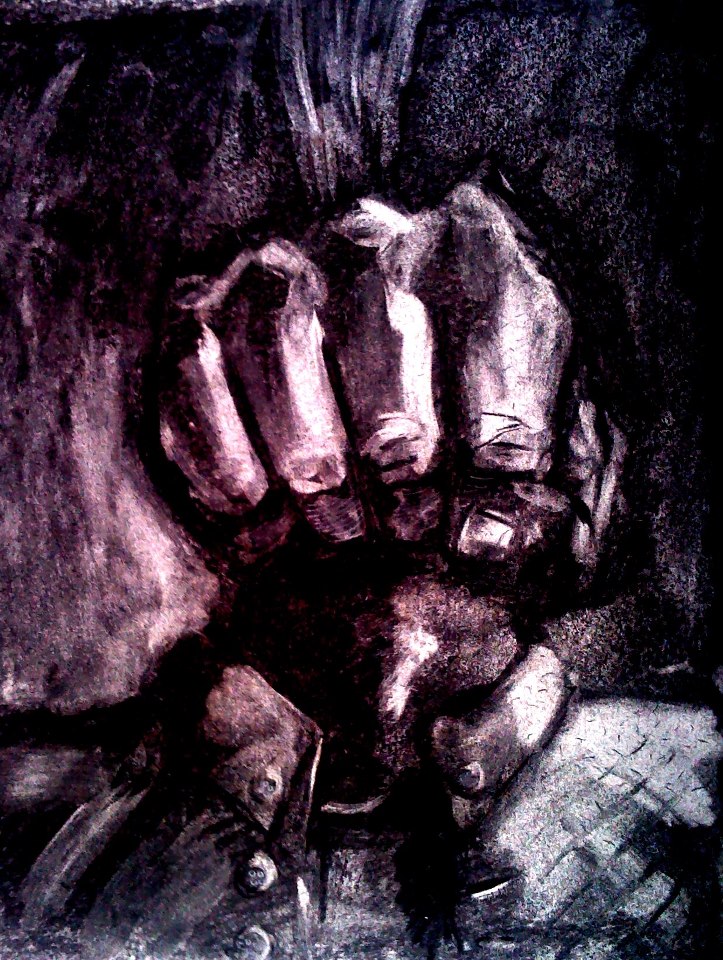
G– Over the summer I read about the Chicago World’s fair and the particular problems of the landscape architect Fredrick Law Olmstead. It was a new field and people didn’t really see him as an architect more as an overpriced gardener. However, he was also an artist in the way that Monet was, building his vision on a scale that in a way is grandiose and godlike, knowing the fruition won’t be seen for a long time. I bring this up because I see you do some gardens. In this way is the design and structure artistic for you? Are you dreaming of the future when you put in landscape details and structures or are you just meeting the needs of clients in the best way possible.
D- There is a difference between what I currently do for pleasure (my own garden) and what I do for a living! That being said gardening is clearly a creative process and one which I don’t see as being intrinsically different to art. Designing with plants and landscape is painting and sculpture written large and given the option I’d love to design and build gardens for people from the ground up.
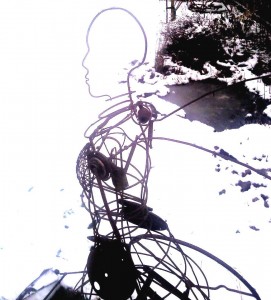
G- On your Facebook page there is some metal and steel work, which is lovely. Can you tell me what mediums you work with currently and what you have worked with in the past?
D-I have worked in clay, paint, charcoal, wood, scrap and semi-precious metals, print media and photography. I’m currently getting back into painting and also experimenting with digital media.
I started using steel when at college because it was considerably cheaper at the time than copper and the other non-ferrous metals we were being taught to use, and I could get cheap scrap from the scrap yard that could be re-forged.
I’m quite into “process” as well as “product” and part of the journey for me is about building kilns or other apparatus to enable the product to be produced. I’m currently very into designing and building bread ovens – not so different to building raku kilns.
G- What is currently capturing your attention the most artistically? What have you tried in the past and felt- Not for me, never doing that again? (In art that is)
D- Currently I’m enjoying looking at work by Anthony Cahill, Wolfe von Lenkiewicz, Nancy Holt, Valerie Hegarty & Roger Hiorns.
I’ve always been into the Neue Sachlichekeit movement’s painters such as Schad and Hubbuch, as well as having a long term and deep love of Schiele, Lucian Freud, the Pop Art movement, and outsider art.
I’m dipping my toe into industrial landscape painting at the moment never having done any before, and I’m enjoying the challenge.
Whilst I love textile arts produced by other people I’ve never been very successful with it personally, which is a bit frustrating when it’s such a varied medium and with such a history. I may try again at some point in the future but it’s quite far down the list, somewhere behind learning Sumi throat singing.
G- If you could collaborate with anyone contemporarily, who would it be?
D- David Nash or Serena de la Hey. She produces fantastic, poetically beautiful, (and often very large) sculptures from natural materials.
G- What job/work would you under no circumstances do?
D- Merchant banker/politician.
G-I have been told by Maggie that you used to teach life drawing. What do you say to young people who want to make and dream and still, have to live? Is there a way to live off of art? Has it gotten easier or harder in our ever modern-ing world?
D- Interesting question – I recently took a younger relative to his interview for an art foundation course. I’m very much of the opinion that you only get one go at life and that it shouldn’t be about making money all the time. If you are creative you will create irrespective of how you earn a living – I don’t honestly think you get much of a choice if you are hardwired that way so you might as well roll with it. I think however that if you go out on a limb and publically define yourself as “artist” then that can be a little narrow and you can end up writing yourself a script that is hard to live by. If you just get on and do it irrespective of other people’s opinions however, you can follow your dreams. I don’t necessarily think it’s got any easier or harder to live off art but it has got hugely more difficult to get access to mainstream training and opportunities to develop. I’m optimistic that more “left field” and crowd sourced opportunities will start to become much more relevant that the mainstream though.
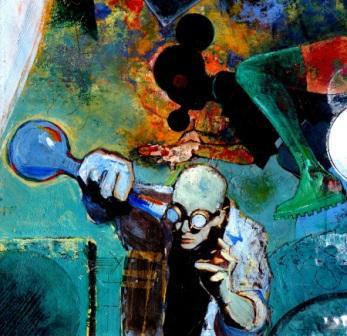
G–A lot of your art has the sense of the fantastic. Although it doesn’t really convey a time, it would be as at home in steam-punkish stories as it would in the future and sci-fi. So what comes to mind for me is, what do you read? And what book are you reading at the moment?
D- I was child of the seventies and young adult in the eighties so science and science fiction were huge influences, hence the Saturn five rockets when I was a kid. I’ve always been into early science fiction (Wells, Verne, Bradbury & Dick) as well as modern writers such as China Mieville. I also love magic realism (Marquez, early Allende) and less well known authors like Bruno Schultz. I’ve been reading a lot of Nordic crime fiction and dip into poetry, particularly Hughes & Heaney.
I’m currently reading 1Q84 by Murakami although I think I prefer his short stories.
A lot of my early sculpture was influenced by the creative salvage movement in the mid-eighties (Arad, Dixon) which in retrospect I suppose could be seen as proto steam punk in a “scrapyard challenge” sort of way.
I don’t consciously work in the fantastic idiom though – ideas come to me and I’m compelled to try to express them before I forget them! Mieville has written about literature and the false distinction between genre fiction and lit fic or “proper” fiction. He argues that the latter is a genre in its own right and just part of the spectrum. I think the same probably applies to visual arts – I don’t see a real distinction between “fantasy”, “steam punk”, Sunday painter, “contemporary” and “high art” although there is a difference in how stuff is marketed and how “clever” the ideas expressed are, and also in taste (although not necessarily in skill). I think that a true and democratic art scene should have room for all.
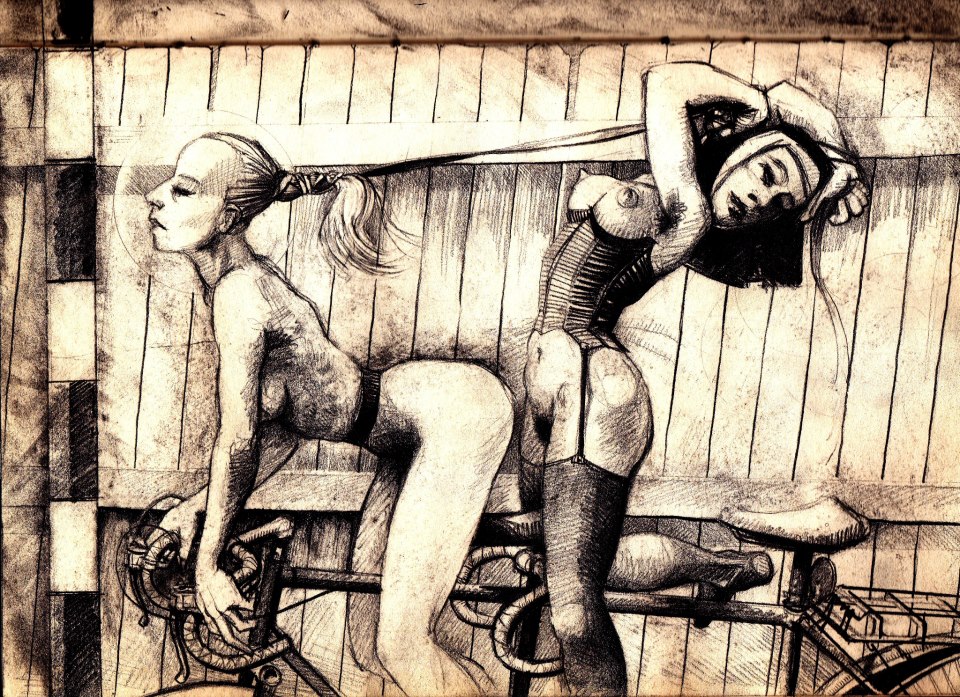
David Seed’s art is for sale if you are interested; please do contact him to negotiate prices. Some of his art can be seen and he can be reached at both of his Facebook pages. He is also available for contract carpentry and building.
https://www.facebook.com/pages/David-Seed-fine-art/516448278377560
https://www.facebook.com/DavidSeedDomesticSolutions

Wonderful art work. Love the variety desplayed here. And such a great interview. The questions gave me a deeper understanding of Mr. Seed, his influences and his process. “If you just get on and do it irrespective of other people’s opinions however, you can follow your dreams.”. What a great receipt for living your dream.
some genuinely wondrous work on behalf of the owner of this internet site , absolutely outstanding subject material .
I adore the opinions on this web site, it really gives it that community feel!
Way cool! Some very legitimate points! I appreciate you creating this short article and also the rest of the website is really great.
it is always interesting to try to see what is behind any creative process … what an interesting man and interviewer … says a lot about the both of you .. one would think that Maggie and her brother made childhood something wonderful for anyone watching them as they grew up ..
??? does one have to actually have a cat to yell “f**k the cat” .. would it have the same impact if a cat was not in jeopardy .. and I love the idea of “I told you I was ill ….. ”
living a creative life, I would think, has little to do with creating anything other than a life well led … wonderful stuff here .. congrats to the both of you …..
@ Rich- I would think yelling “Fuck the cat!” Would be even more impactful given the lack of feline presence.
Always good to hear from you, Cheers!
Thanks very much for the comments. As regards “F**k the cat” you have to be careful. I was once the cause of my neighbour’s four year old running round the garden shouting it for an hour after I was trimming some expensive doors and planed a quarter of an inch of the same door twice after getting distracted (quite probably by the feline in question).
off not of